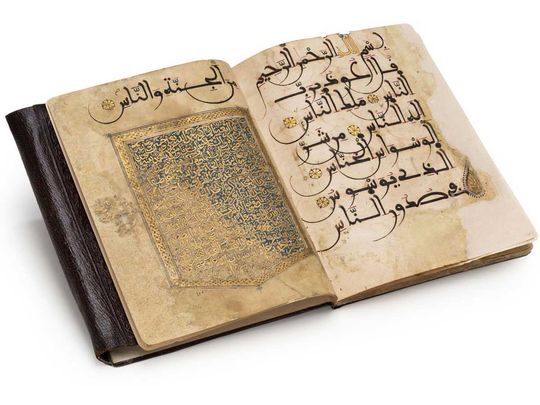
This November, the Museum of Islamic Art (MIA) will present Splendours of the Atlas: A Voyage Through Morocco’s Heritage, a major exhibition that takes visitors on a journey through Morocco’s legacies, unveiling the forces that have shaped the country’s unique identity. Organized as part of the Qatar-Morocco 2024 Year of Culture, the exhibition will showcase more than 200 objects—including artifacts, manuscripts, instruments, jewelry, and photographs—to tell a multifaceted story of Moroccan history, society, and artistic expressions, and how they continue to influence the nation’s culture today.
Splendours of the Atlas includes loans from Moroccan institutions, such as the National Foundation of Museums and the National Library of Rabat, with objects that have never before been displayed in Qatar. Additionally, previously unseen works from the collections of Qatar Museums, MIA, and the future Lusail Museum will also be featured. The exhibition is curated by Dr Mounia Chekhab-Abudaya, MIA’s Deputy Director of Curatorial Affairs.
Sheikha Al Mayassa bint Hamad bin Khalifa Al Thani, Chairperson of Years of Culture and Qatar Museums, stated, “We are extraordinarily fortunate to partner with institutions across Morocco for our Qatar-Morocco 2024 Year of Culture, which will greatly enhance the ability of Qataris and those living in Qatar to gain insight into the grand Islamic traditions of our neighbor in North Africa. Our shared commitment to scholarship, scientific discovery, and artistic excellence has provided a fertile foundation for this year’s rich Year of Culture program.”
The Years of Culture initiative fosters lasting cultural partnerships between Qatar and other nations. It aims to promote respect and understanding among diverse cultures and serves as a catalyst for bringing people together.
Organized thematically into five sections, Splendours of the Atlas highlights Morocco’s diverse and interconnected cultures and their lasting influence on contemporary life. The exhibition begins with "Faces of Morocco: Landscapes and Society," an introductory gallery featuring photographs by Bruno Barbey, Irving Penn, Lalla Essaydi, Mous Lamrabat, and Mounir Raji.
The second section, titled "The Soul of Morocco: Kings, Saints, and Scholars," explores Moroccan dynastic history, focusing on the theological scholarship and scientific advances that flourished in the cities of Fez and Marrakech, two major centers of learning.
"Threads of Tradition: Morocco’s Artisanal Mastery"—the third and largest section—delves into the pivotal role of crafts in Moroccan culture. It showcases industries such as leatherwork, textiles, carpets, ceramics, jewelry, and woodworking that have thrived for generations.
The fourth section, “Traditional Sounds of Morocco,” highlights musical instruments, including objects from the Dar Jama’i Museum in Meknes, used to create a wide range of music, from the Andalusian melodies of the cities to the gnawa music of the South.
The final section is an homage to contemporary Moroccan craftsmanship. It features seven commissioned works by Moroccan artist Noureddine Amir, which will hang from the gallery's ceiling. These striking, contemporary abstract pieces respond to traditional crafts while reimagining them in new, creative forms.












